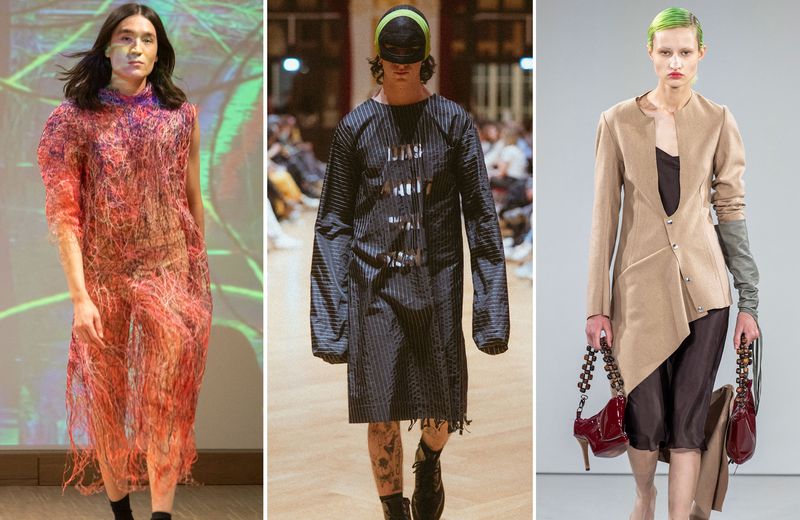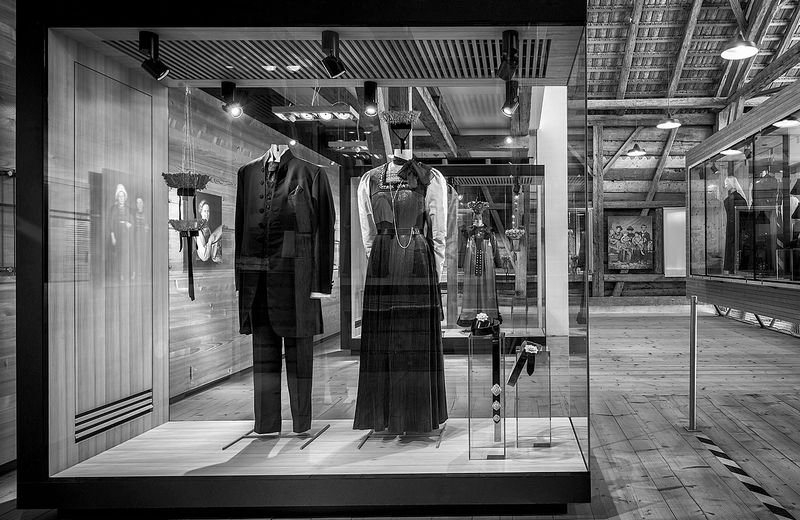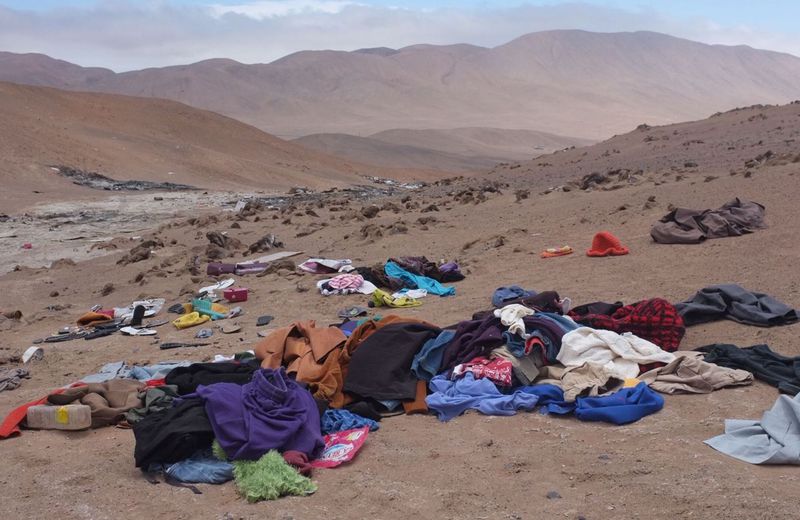
The Human Approach to Digital Disruption
Sabinna - The London based fashion designer speaks on her own design process, what inspires her, and the future of fashion as she sees it.
When visiting Sabinna Rachimova, I am immediately struck by the sweet hues of pastel and sunshine yellow which flood her design studio with colour in the heart of Shoreditch. Founded by the Russian-born, Austrian-raised designer, the ready-to-wear label SABINNA focuses on knitwear and is embraced by fashion enthusiasts worldwide due to original prints and a poised aesthetic of contemporary femininity. The brand is also praised for its sustainable approach, with a recent example including a collaboration with fashion tech innovation agency BRIA, to transform end of life garments into 100% recyclable and biodegradable materials.
After graduating from the world renowned Central Saint Martins in London, Rachimova has worked for houses including Christian Dior and Mary Katrantzou and since 2015, has become a regular at London Fashion Week with her eponymous label.
The brand’s DNA is rooted deep in Rachimova’s heritage, paying tribute to two generations of her family. In particular, it was her grandmother, who inspired a career within the arts as during communist times she originally created clothing for friends and neighbours for additional income. Rachimova often cites her family, based in Vienna, for influencing her design choices which translates into authentic, thoughtful fashion. In an arguable contrast to a product born of very real human storytelling and emotion, the brand is a celebrated leader in digital innovation, having won the Fashion Futures award presented by Decoded Fashion and the British Fashion Council in 2017. Rachimova herself is a respected figure in the field of fashion technology, and is regularly invited to share her expertise at world renowned institutions such as the MAK in Vienna or the London School of Economics. The brand often employs unique solutions for fashion presentations such as showcasing collections entirely on social media or through mixed reality. However, what distinguishes Rachimova to other designers actively employing fashion tech, is that she uses technology to meaningfully connect with customers and local suppliers, opposed to replacing her craft with an artificial alternative. She uses fashion tech to speak and learn from her growing audience and encourages this open dialogue to address the needs of the modern woman.
It was a privilege to speak with Sabinna on her approach to fashion in the digital age as well as her thoughts on where she sees the fashion industry headed. As a designer, a pioneer of immersive technology, and as a young woman Sabinna is a true role model.

Photo © SABINNA Sabinna in her studio in Shoreditch

Photo © SABINNA Sabinna describing her collection
On the SABINNA Aesthetic
There are so many different sides to me. Growing up in different countries gave me the possibility to explore and understand different cultures. It also made me realise that everyone is different, every human being is an individual. You can’t fit a person into one box that society has created.
That’s why I like to bring together contrasting things - seeing it as a push to just be yourself. I feel that especially for women there are still too many rules that request to define yourself: Who are you? Are you a career woman? Or a mother? Also culturally, people put labels on you. I think it’s important to ask why do you think that? Why would you put me in that particular box? This starts an important conversation. Fashion is a great way to deepen this conversation.
Life is complicated, you evolve as a person, your opinion might change, your thoughts might shift. My early 20s me is so different to my late 20s me. It is totally fine to change opinions or to rethink some stuff. I think it actually takes more courage to rethink, you have to be brave to admit that there is more than one correct answer to every question.
On the Design Process
I look at things from the past, things I went through and experienced. Stories of other women that I heard, that were told to me. I make it relevant for the present time, while looking into the future. It can start from a little thing - for example a memory I have. Then I start conversations with people around me, just by asking their opinion, a normal everyday conversation. Talking about things is the key. Having conversations is the key. This is how I build bridges between me and everyone and everything that surrounds me. Are the topics that I want to explore relevant to other women as well? Should we talk about it? The development of the concept becomes an organic process, that often takes over me. I try not to fight it but instead to trust my brain and instinct. To summarise the SABINNA aesthetic: I explore women, their stories, my own stories and the conversation that comes from it.
On Inspiration Sources
In every collection there is always such a huge psychological aspect. People always try to connect the garments to certain visuals, as this is more obvious than connecting them to thoughts and feelings. For me inspiration comes mostly from things I feel and see during a certain period of time. As a next step I connect the emotions with the visuals in my head. It’s also crucial to find a title. A good title helps you so much. It is the first step to building the house!
Our most recent collection was titled “Out of focus” exploring how you feel when you don’t really belong anywhere anymore. A transition stage from being a young adult to an actual adult. I am at this stage myself and it was interesting to question my own thoughts and understanding of who I am and who I want to become. Any articles, paintings, movies or books about finding yourself became part of the concept and eventually part of the collection mood boards. Creating a collection is like making a puzzle. I see 100 pieces and it takes a while to put it in the right order. It has to make sense to me before I can explain it to someone else.
© Sabinna
On Role Models
I think you should be careful having only one single role model - that can inform you too much and put too much pressure on you. You will end up comparing yourself to someone else's success. You are an individual so you can’t follow someone else’s story. My inspiration / role models always changed. For example, I am a huge fan of Prada - she has a strong vision and she is an amazing business woman - that’s what I admire about her. She understands the woman that wears Prada or MiuMiu. But the inspiration / role model doesn’t always have to be a big name. l recently went to Stockholm and discovered so many fantastic Swedish designers that connect wearable design and commercial success with an artistic approach to fashion. It’s amazing, I was very inspired.
On Technology
If you say you are exploring the possibilities of fashion tech, people usually think you do wearables. As soon as I tell them it’s more about using technology to communicate with our customer and make their experience more valuable, people get confused. This is often a communication barrier. And for me it’s important to break this barrier and show new approaches when connecting fashion and technology.
My team and I use technology to communicate with the customer. We try to tell them our story and what stands behind the brand. We also want to understand their point of view and their behaviour as a customer. Direct feedback is so crucial if you want to improve your product. Once you have all this feedback available, it’s up to you how you use it.
Of course technology also has a dark side - it can eat you if you are not careful. All of a sudden you live more online than offline, that’s dangerous. You slowly shift away from the reality, especially social media can be tricky. Sometimes I do have the feeling that technology took over and we have no control anymore, and that scares me. But I do also think that it’s up to us to use the tools responsibly. Responsible in how we look at things, consume and behave. It is our choice and behaviour, which will inform the future.
On the future of fashion
When you work in the fashion industry you need to be optimistic. Otherwise your career is very short and will end up being a one way road! It’s difficult to stay optimistic, but I work with so many amazing people, that helps me to keep the energy level up. I’m inspired by my team and together we can make a change and it’s wrong to think that my voice is not relevant. If we all would think that way, nothing would ever change and I do think we should all try to make a difference. We can all start small by for example buying less fast fashion items or choose natural fibres over plastic.
My dream scenario for the future of fashion is: more sustainability, more awareness and more understanding of how a product is made. We need to educate the consumer and I just hope we will have more young and exciting brands that will explore individuality instead of mass consumption. People will always buy new things, let’s give them products that are not harming anyone.
https://www.sabinna.com
Text & Interview: Nina Van Volkinburg





